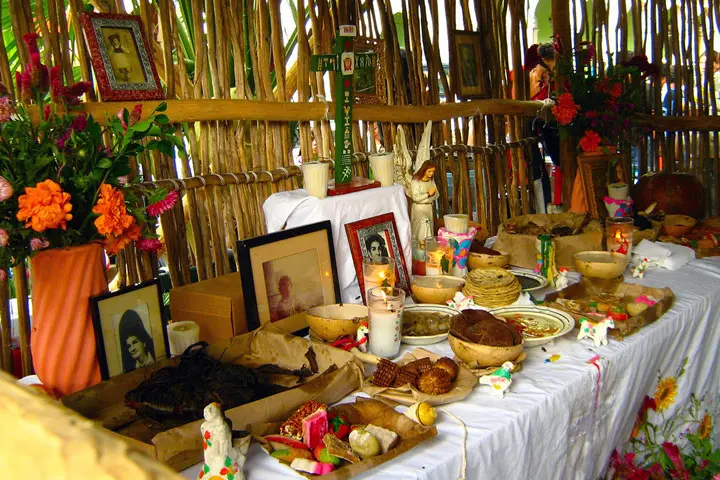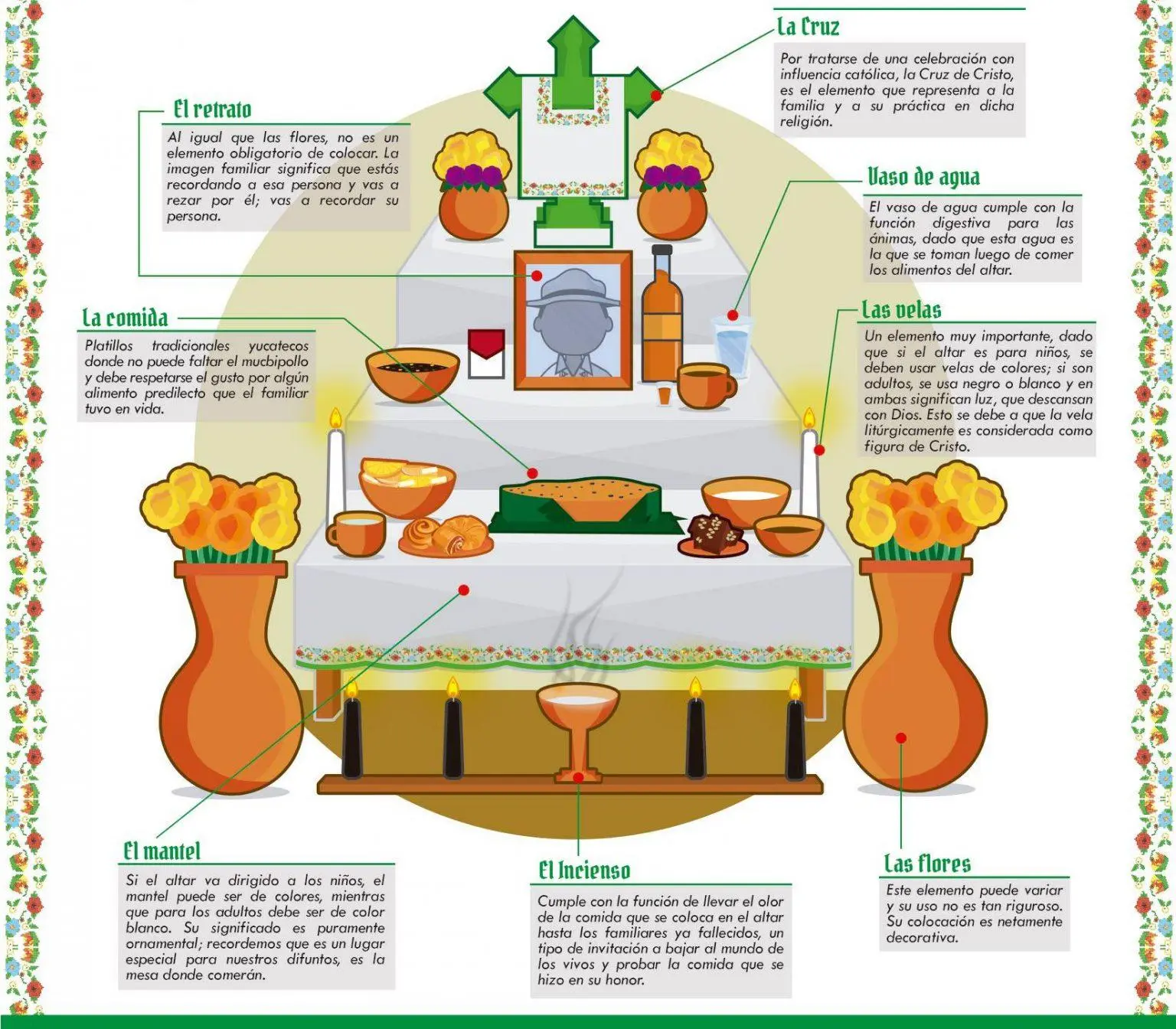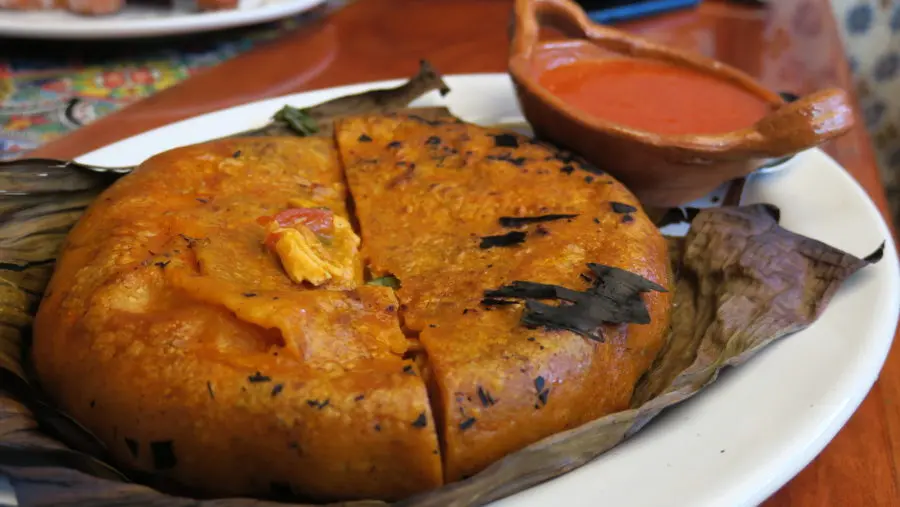
Have you ever heard of Hanal Pixan? This is a celebration held annually in the regions of Quintana Roo and Yucatán to honor loved ones who have passed away. Similar to the Day of the Dead, Hanal Pixan is a Mayan celebration that has grown in significance over the years.
How is it celebrated, and where can you experience it? Keep reading to find out all the details.
What is Hanal Pixan?
Hanal Pixan is a Mayan tradition that resembles the well-known Day of the Dead in Mexico.
“Hanal Pixan” means “food for the souls” and is one of the most beloved celebrations among the people of the Yucatán Peninsula, celebrated at the end of October and the beginning of November.
How is Hanal Pixan Celebrated?
Hanal Pixan is celebrated over three days, from October 31 to November 2 each year. Unlike other traditions, particularly the Day of the Dead, Hanal Pixan dedicates the first day to children, the second to adults, and the third to all saints.
Preparations to welcome the souls of loved ones can last up to eight days, allowing the spirits ample time to visit. This includes cleaning the house, washing clothes, lighting candles at the main entrances, and placing them to warmly welcome the souls.
For the ofrenda, the altar arrangement is like the Day of the Dead but with unique elements. In Quintana Roo and Yucatán, the offerings include a green cross representing the sacred Mayan ceiba tree, gourds representing the four cardinal directions, and a flower-adorned tablecloth over the altar table. Tradition holds that 22 offerings of food are placed for the gods—13 for the sky gods and 9 for the gods of the underworld.
How to Set Up an Altar for Hanal Pixan

As mentioned, Hanal Pixan celebrates children on the first day, adults on the second, and all saints on the third. Each day features different altars, which include a table covered with a tablecloth, food, seasonal fruits, candles, flowers, photos, and “Pib”—a large, round tamale that is emblematic of the tradition.
The essential altar elements include:
- Table, cloth, green cross, incense for guiding spirits, salt, and water for purification. The unmissable dish is the Mucbipollo, or “Pib,” which is made with corn flour dough and lard, stuffed with chicken, and seasoned with tomatoes and chiles. It’s wrapped in banana leaves and traditionally cooked in underground ovens, called “muuk” in Mayan, at family homes.
- The altar should also feature seasonal fruits like oranges, jicamas, or tangerines, balché (a ceremonial drink), and a jícara of tanchuchá (a drink made of corn dough, cacao, pepper, and anise).
Here’s how the altars are decorated over the three days:
- Hahal Palal, October 31: A day dedicated solely to deceased children. Their altars include a table with a colorful, embroidered white tablecloth, toys, sweets, candles in various colors, flowers like xpujuc, xtés in red, and Virginian flowers.
- Hanal Nuchch, November 1: This day is decorated with a white cloth embroidered with black, white candles, work tools, clothes, shoes, and a clean pair of sandals for their journey.
- Hanal Pixanoob, November 2: A local cemetery holds a Mass for the faithful departed with prayers for the souls.

Hanal Pixan in Quintana Roo 2024
If you’re visiting during this beautiful Yucatán tradition, you’re in for a treat. In Cancun, there will be Hanal Pixan celebrations this year in Puerto Juarez and at Parque de las Palapas, where you can experience altar exhibitions, a Catrina parade, contests, and much more from October 31 to November 3.
Amigas y amigos les compartimos la programación del #JanalPixan2024 en Puerto Juárez y el Parque de Las Palapas en #Cancún.
No se pueden perder la exhibición de altares, procesión marítima, desfile de catrinas, concursos y mucho más del 31 de octubre al 3 de noviembre.… pic.twitter.com/zLOdgzQek7
— Mara Lezama (@MaraLezama) October 31, 2024
Enjoy this incredible Hanal Pixan celebration in Quintana Roo! Celebrate our traditions with us.


